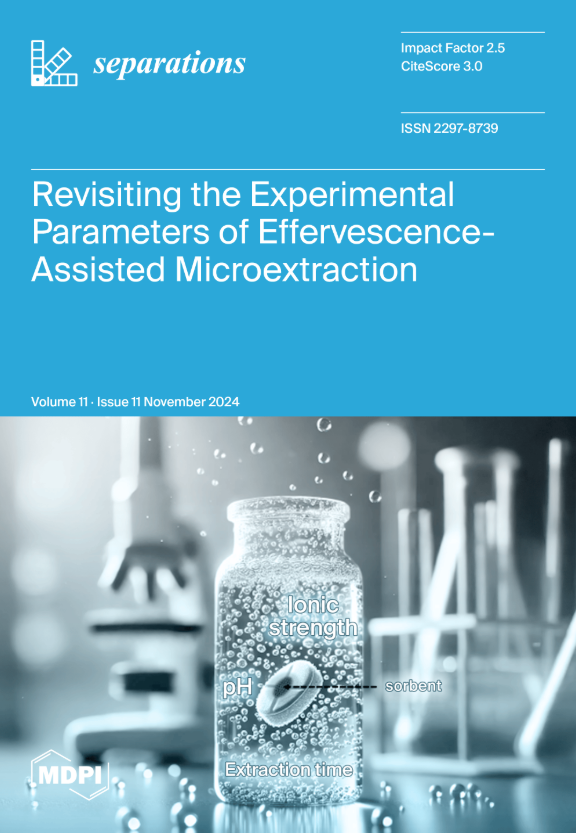Fenton Oxidation Combined with Iron–Carbon Micro-Electrolysis for Treating Leachate Generated from Thermally Treated Sludge
IF 2.7
4区 工程技术
Q3 CHEMISTRY, ANALYTICAL
引用次数: 0
Abstract
In this study, Iron–Carbon Micro-Electrolysis (ICME), Fenton oxidation, and their combination were investigated to treat the leachate obtained from a wastewater treatment plant located in southern China. The results show that the Fenton-ICME process was the most efficient one. After the leachate was treated with the Fenton-ICME process, the COD concentration was reduced from the initial 35,772 mg/L to 13,522 mg/L, and the removal efficiency was up to 62.2%. In addition, the biological oxygen demand (BOD) to COD ratio increased by 40% at optimal conditions. This suggests that the biodegradability of the leachate has been increased, facilitating the biodegradation of the leachate after it is mixed with the raw wastewater. By studying the characteristic variation of the leachate treated with the Fenton-ICME process, it was found that the combined process mainly removes organic compounds such as aromatic compounds, ketones, and aldehydes. The separated sludge does not have a crystalline structure, and the iron in it mainly exists in the form of trivalent iron. It reveals that the Fenton-ICME process has great potential to be used as a pretreatment of leachate.Fenton氧化联合铁炭微电解处理热处理污泥渗滤液
本研究研究了铁碳微电解(ICME)、Fenton氧化及其组合处理中国南方某污水处理厂的渗滤液。结果表明,Fenton-ICME工艺效率最高。经Fenton-ICME工艺处理后,COD浓度由初始的35,772 mg/L降至13,522 mg/L,去除率达62.2%。此外,在最佳条件下,生物需氧量(BOD) / COD比提高了40%。这说明渗滤液的可生物降解性得到了提高,有利于渗滤液与原废水混合后的生物降解。通过研究Fenton-ICME工艺处理的渗滤液的特性变化,发现联合工艺主要去除芳香族化合物、酮类、醛类等有机化合物。分离后的污泥不具有结晶结构,其中的铁主要以三价铁的形式存在。表明Fenton-ICME工艺在渗滤液预处理方面具有很大的应用潜力。
本文章由计算机程序翻译,如有差异,请以英文原文为准。
求助全文
约1分钟内获得全文
求助全文
来源期刊

Separations
Chemistry-Analytical Chemistry
CiteScore
3.00
自引率
15.40%
发文量
342
审稿时长
12 weeks
期刊介绍:
Separations (formerly Chromatography, ISSN 2227-9075, CODEN: CHROBV) provides an advanced forum for separation and purification science and technology in all areas of chemical, biological and physical science. It publishes reviews, regular research papers and communications. Our aim is to encourage scientists to publish their experimental and theoretical results in as much detail as possible. There is no restriction on the length of the papers. The full experimental details must be provided so that the results can be reproduced. There are, in addition, unique features of this journal:
Manuscripts regarding research proposals and research ideas will be particularly welcomed.
Electronic files and software regarding the full details of the calculation and experimental procedure, if unable to be published in a normal way, can be deposited as supplementary material.
Manuscripts concerning summaries and surveys on research cooperation and projects (that are funded by national governments) to give information for a broad field of users.
The scope of the journal includes but is not limited to:
Theory and methodology (theory of separation methods, sample preparation, instrumental and column developments, new separation methodologies, etc.)
Equipment and techniques, novel hyphenated analytical solutions (significantly extended by their combination with spectroscopic methods and in particular, mass spectrometry)
Novel analysis approaches and applications to solve analytical challenges which utilize chromatographic separations as a key step in the overall solution
Computational modelling of separations for the purpose of fundamental understanding and/or chromatographic optimization
 求助内容:
求助内容: 应助结果提醒方式:
应助结果提醒方式:


